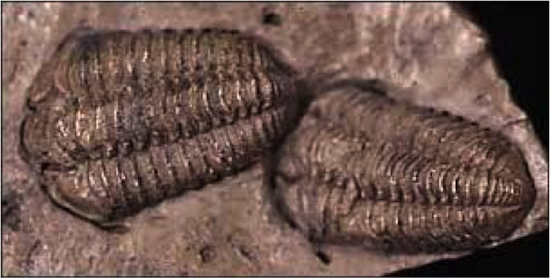
Trilobite Notes

Trilobites are hard-shelled, segmented creatures that lived during the early Cambrian to late Permian Periods (570 to 230 million years ago) in the Earth's ancient seas. They are considered to be one of our planet's earliest complex life-forms and are one of the key signature creatures of the Palaeozoic Era. The name trilobite means 'three lobed" and is derived from the fact these animals had bodies featuring three longitudinal lobes (head, body, tail).
Trilobites were among the early arthropods, a phylum of hard-shelled creatures with multiple body segments and jointed legs (although the legs, antennae and other finer structures of trilobites only rarely are preserved). They constitute an extinct class of arthropods, the Trilobita, made up of ten orders, over 150 families, about 5,000 genera, and over 20,000 described species.
New species of trilobites are unearthed and described every year. This makes trilobites the single most diverse class of extinct organisms, and within the generalized body plan of trilobites there was a great deal of diversity of size and form. The smallest known trilobite species is under a millimetre long, while the largest include species from 30 to over 70 cm in length. With such a diversity of species and sizes, speculations on the ecology of trilobites includes planktonic, swimming, and crawling forms, and it is presumed they filled a varied set of feeding niches, although perhaps mostly as detritivores, predators, or scavengers.